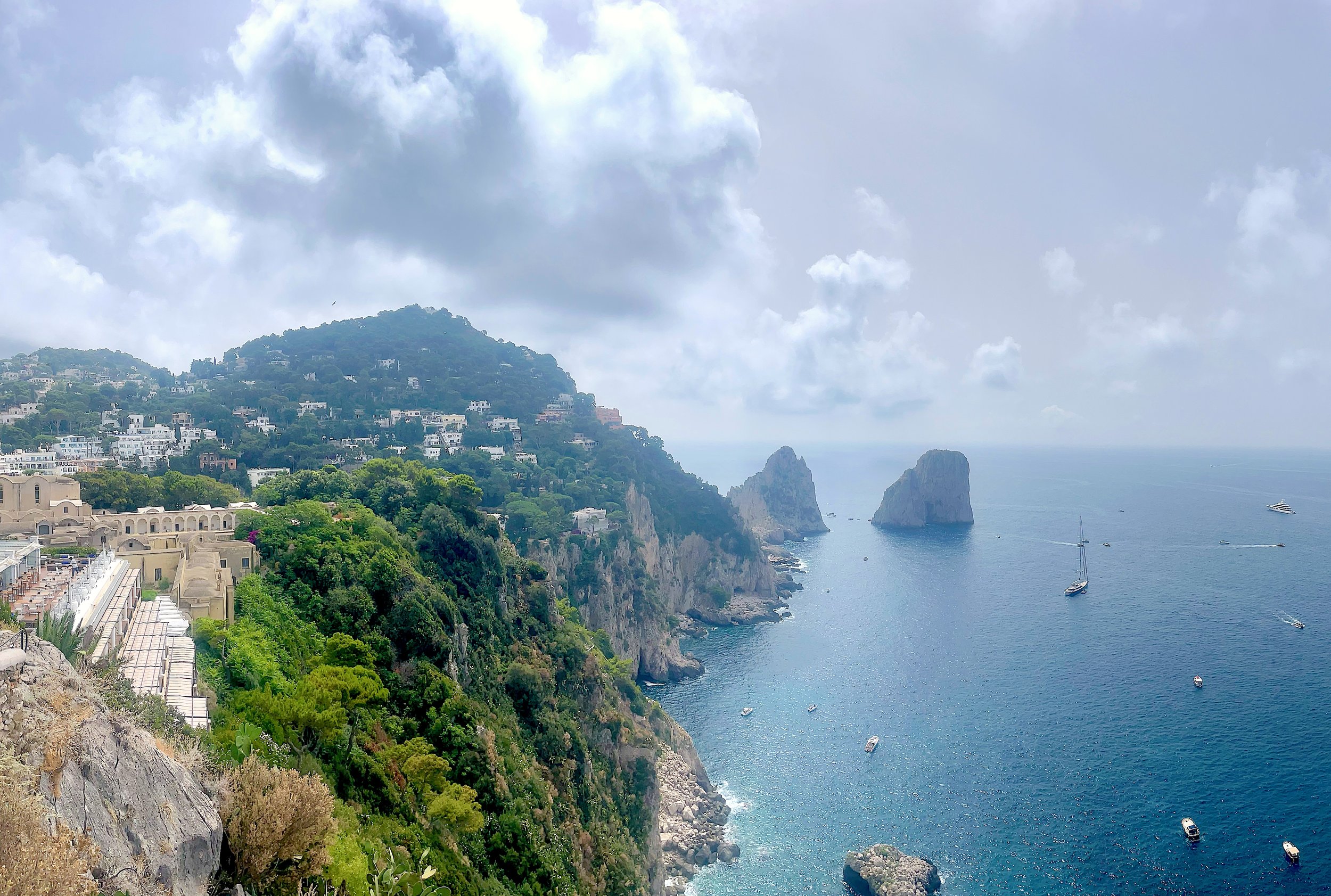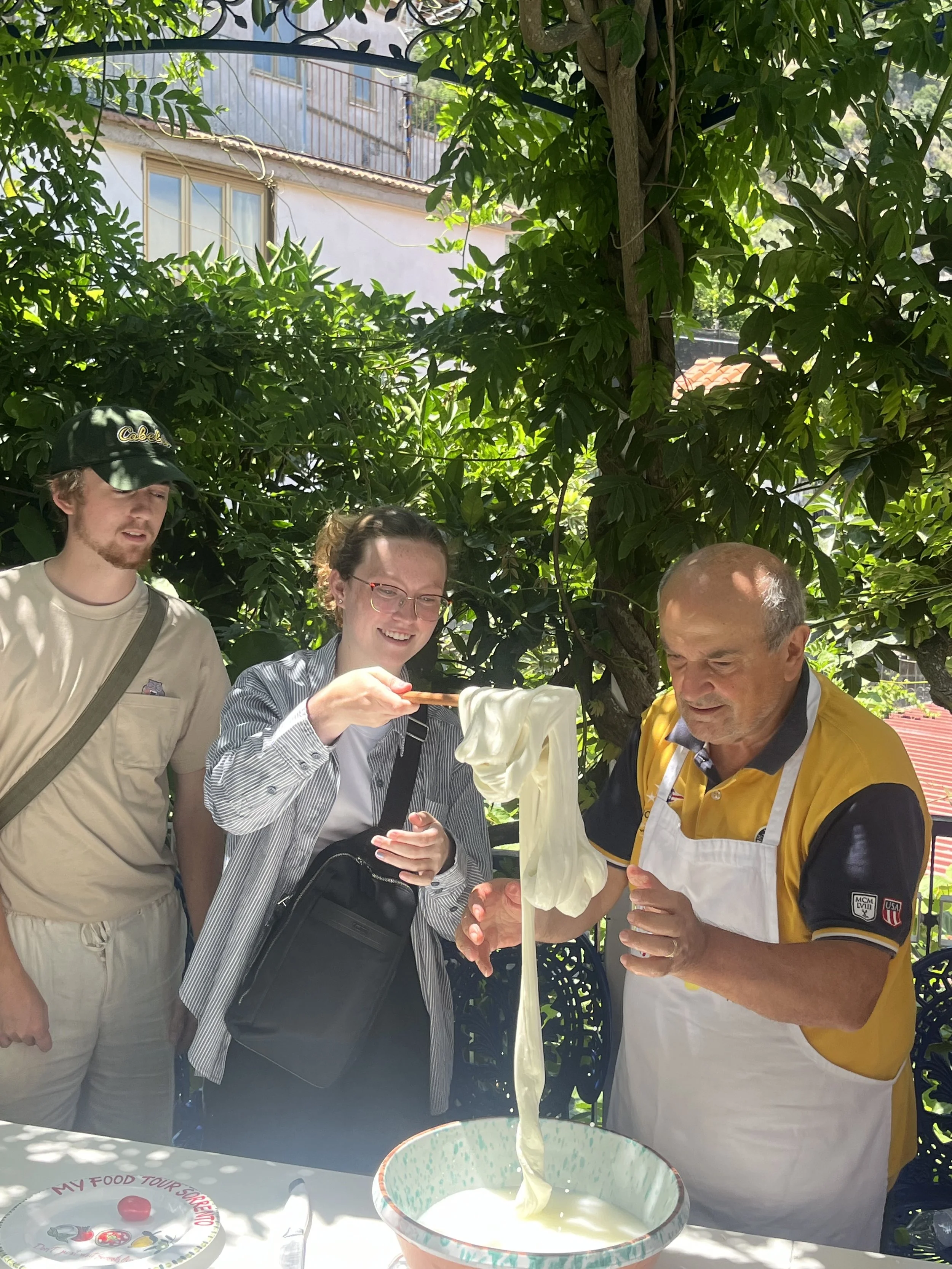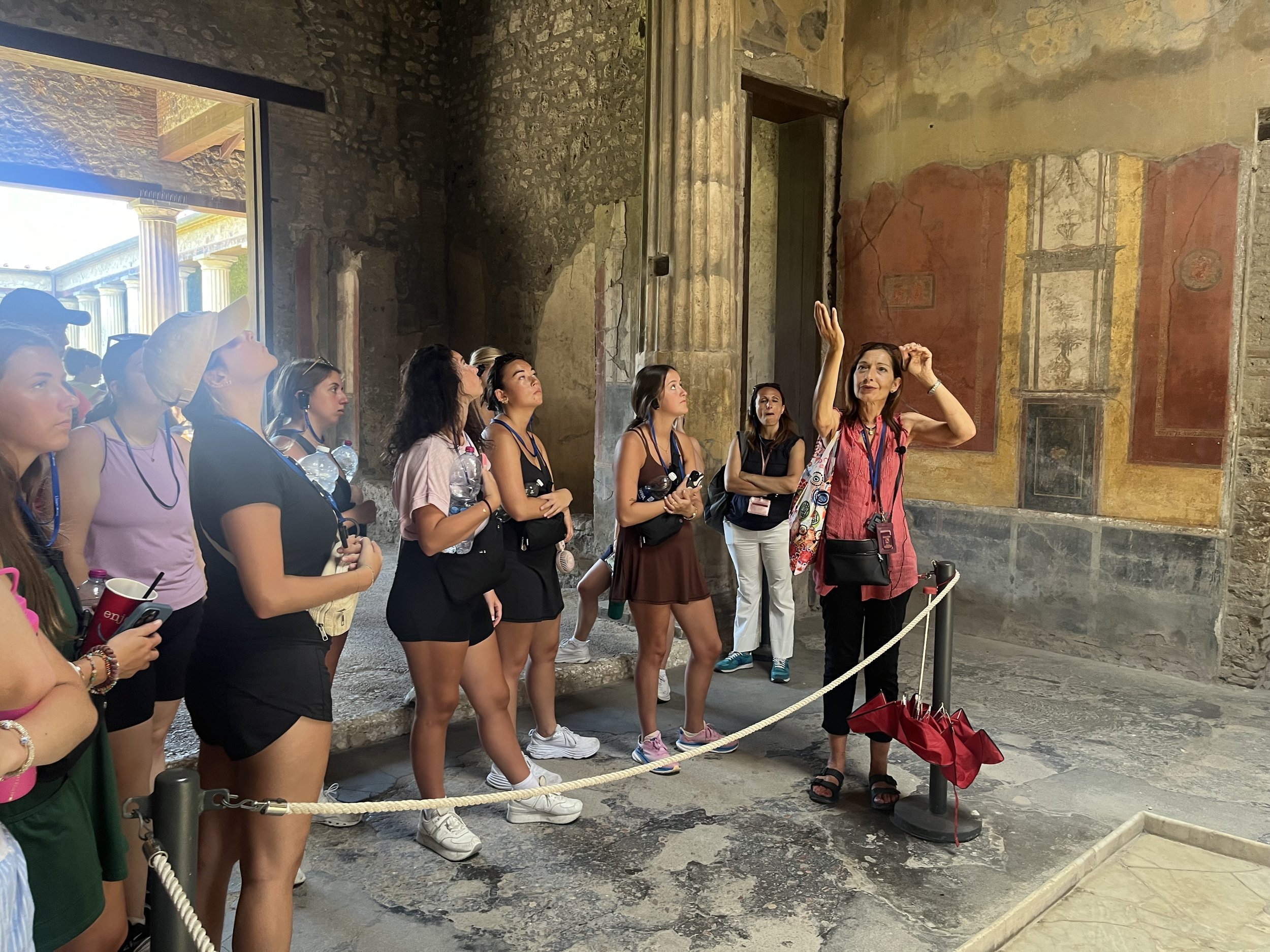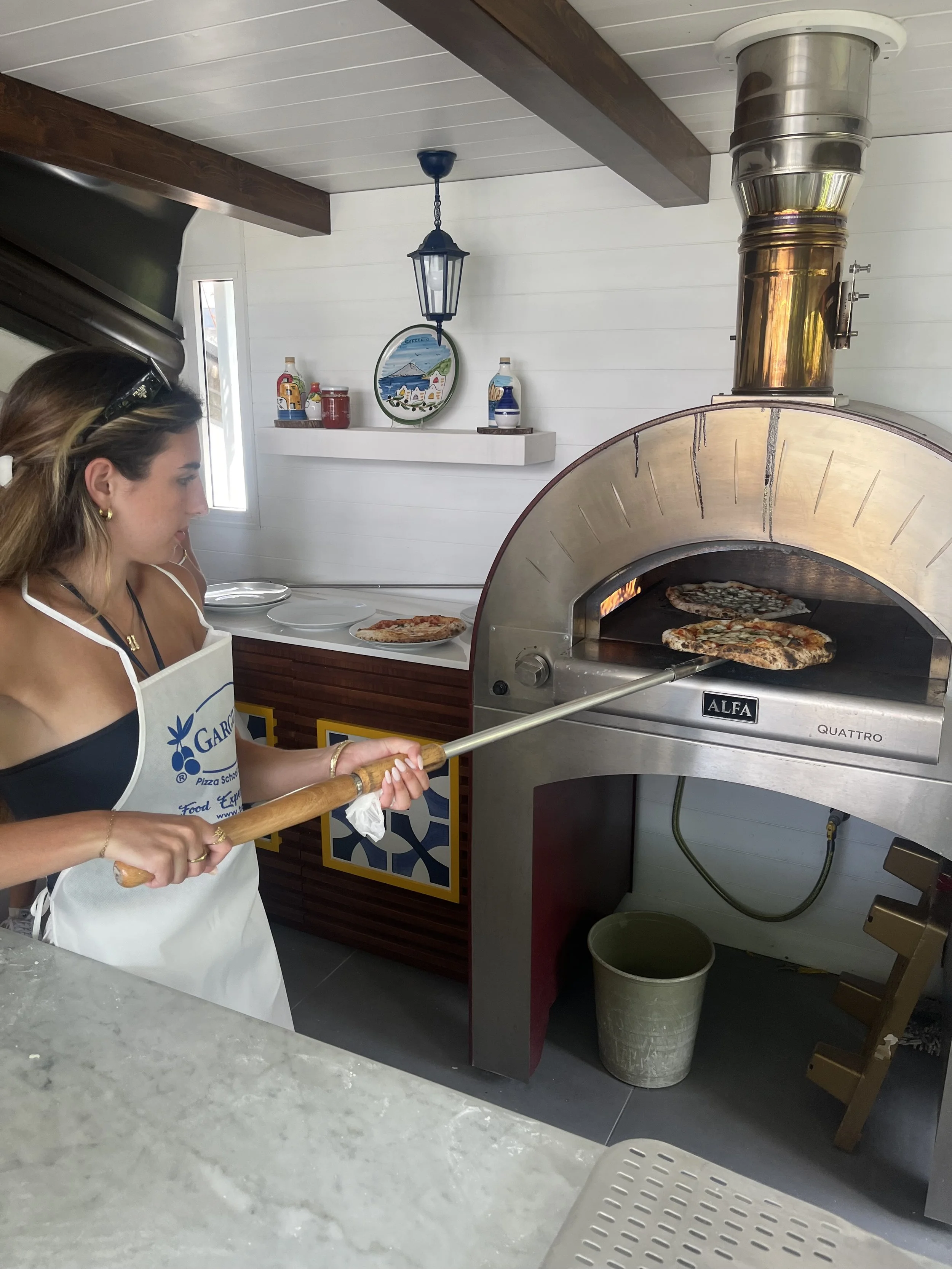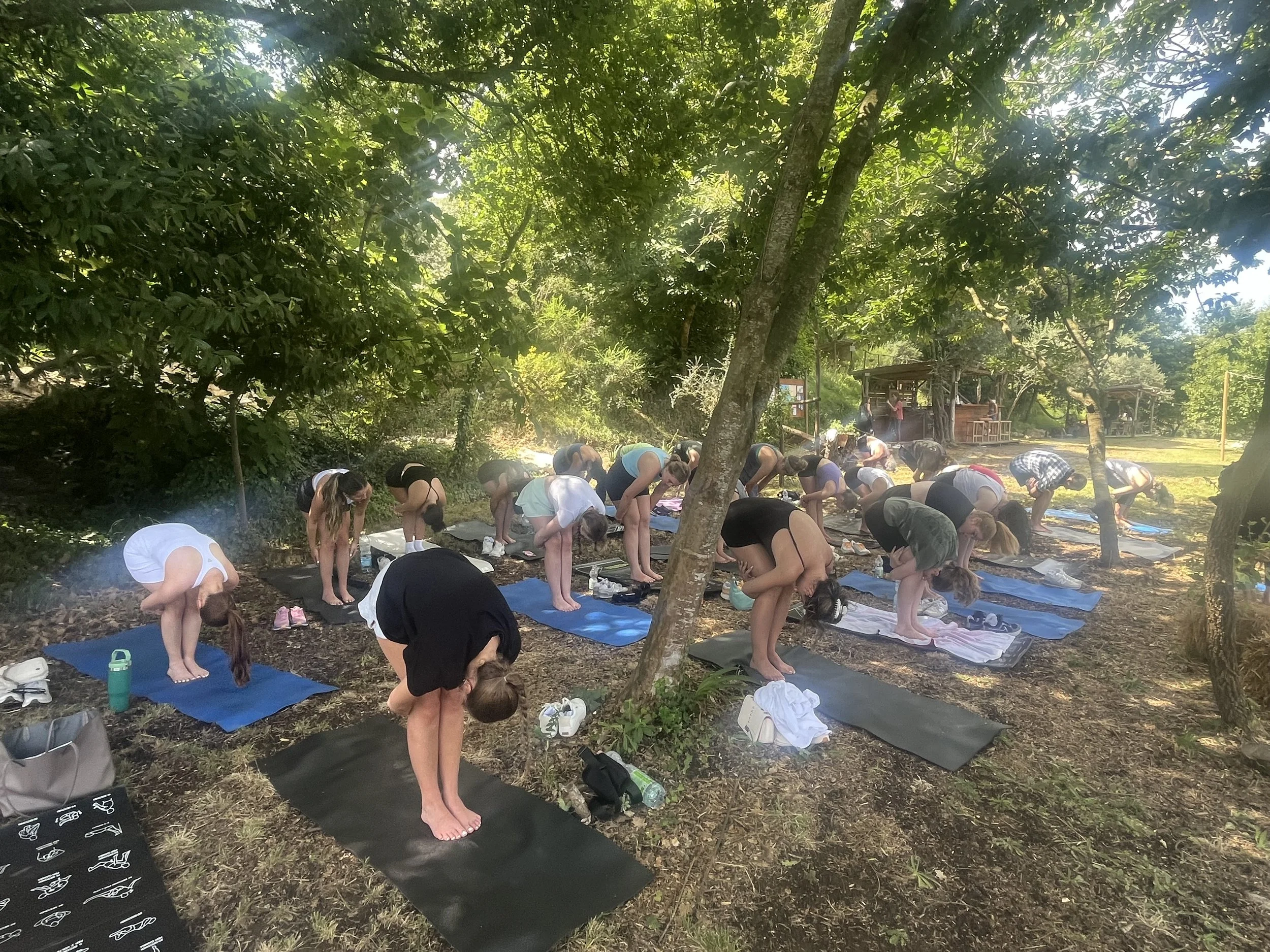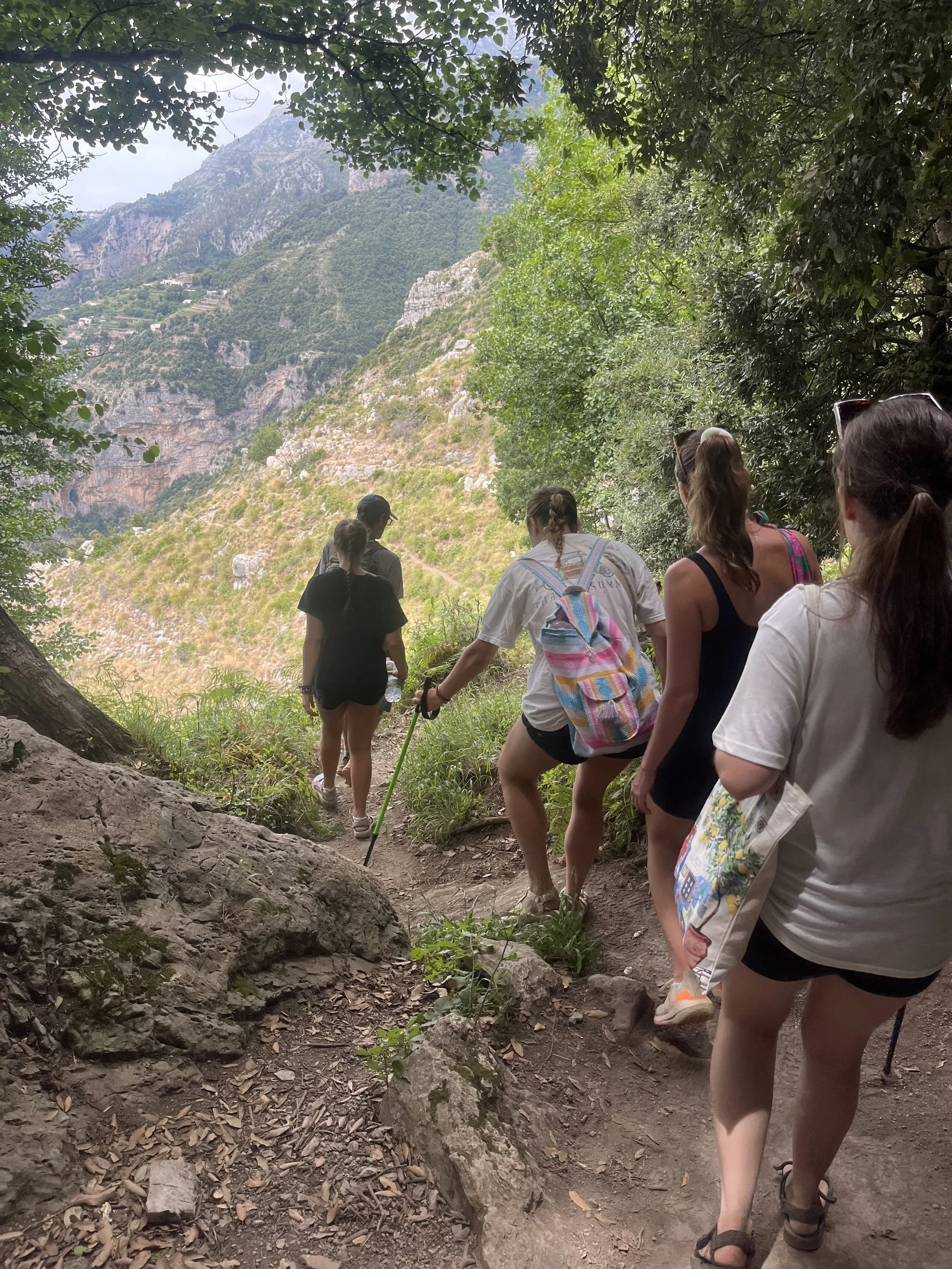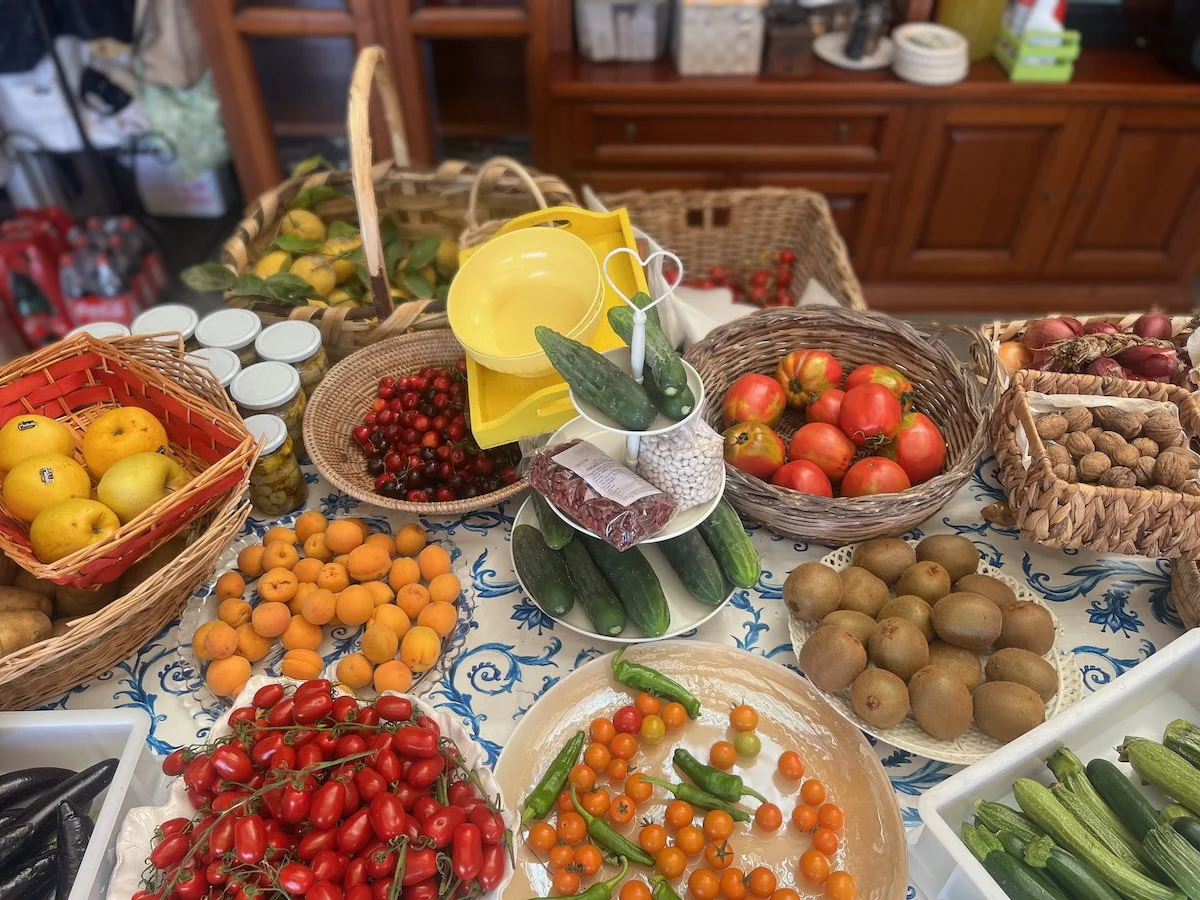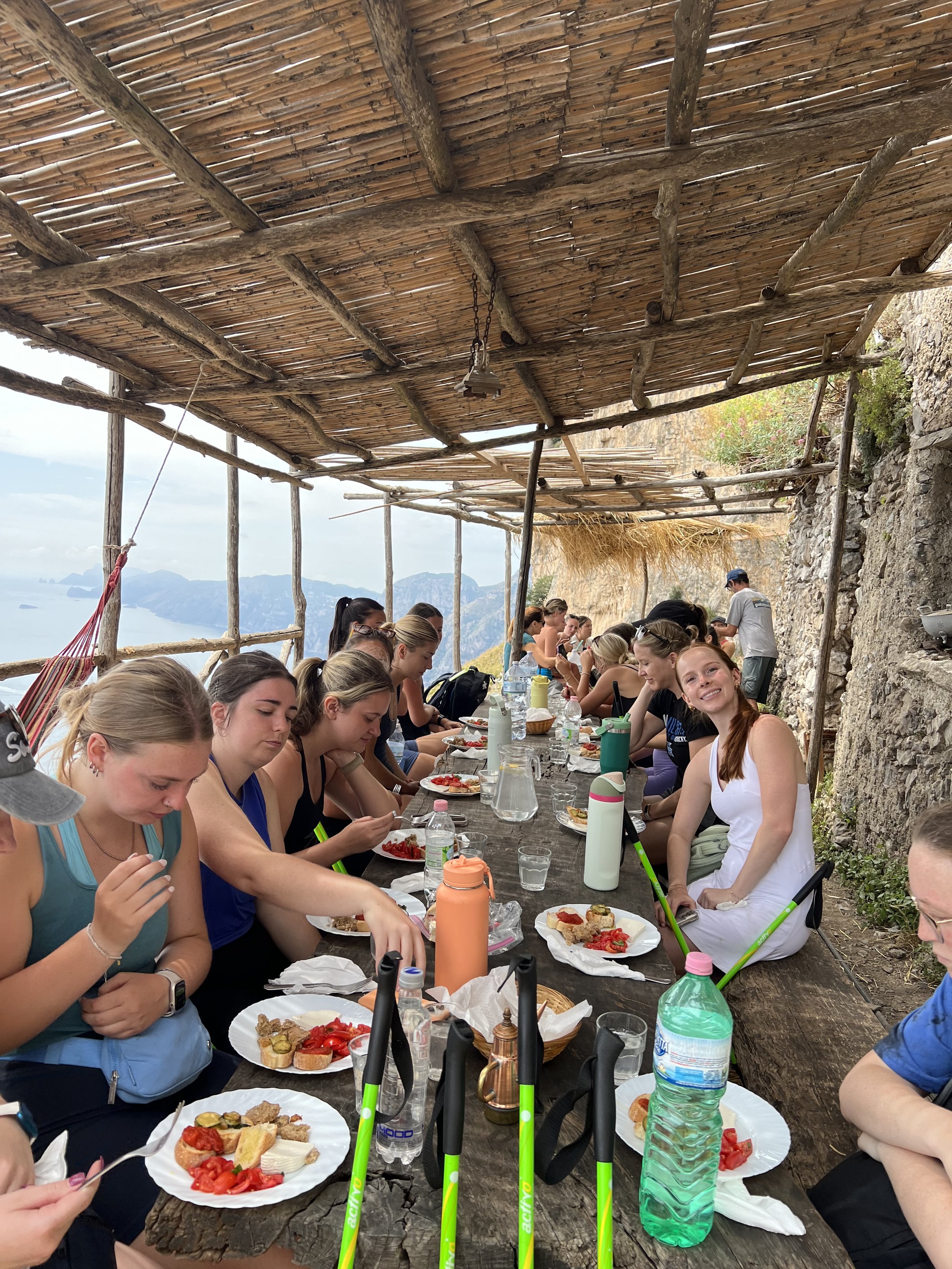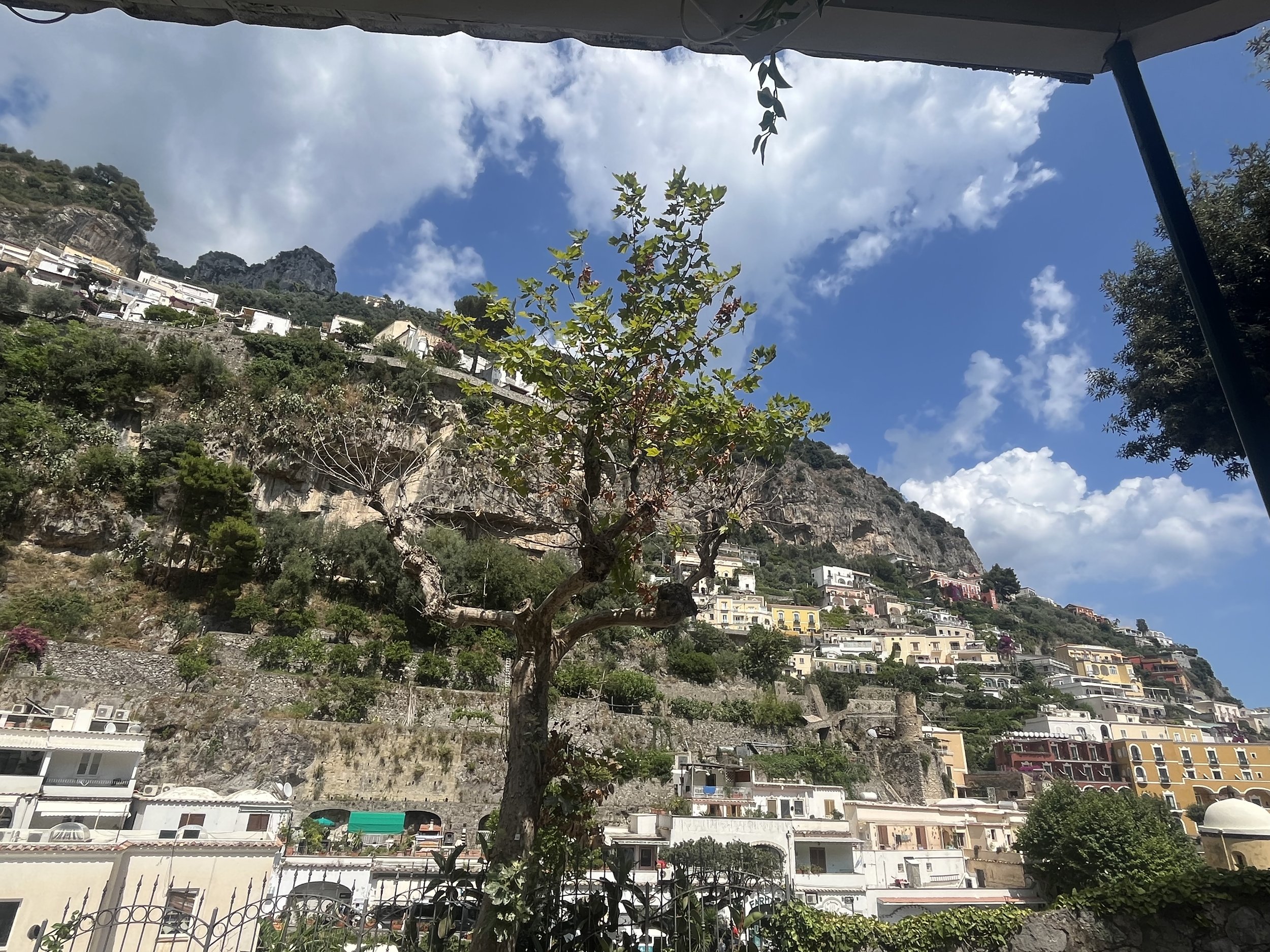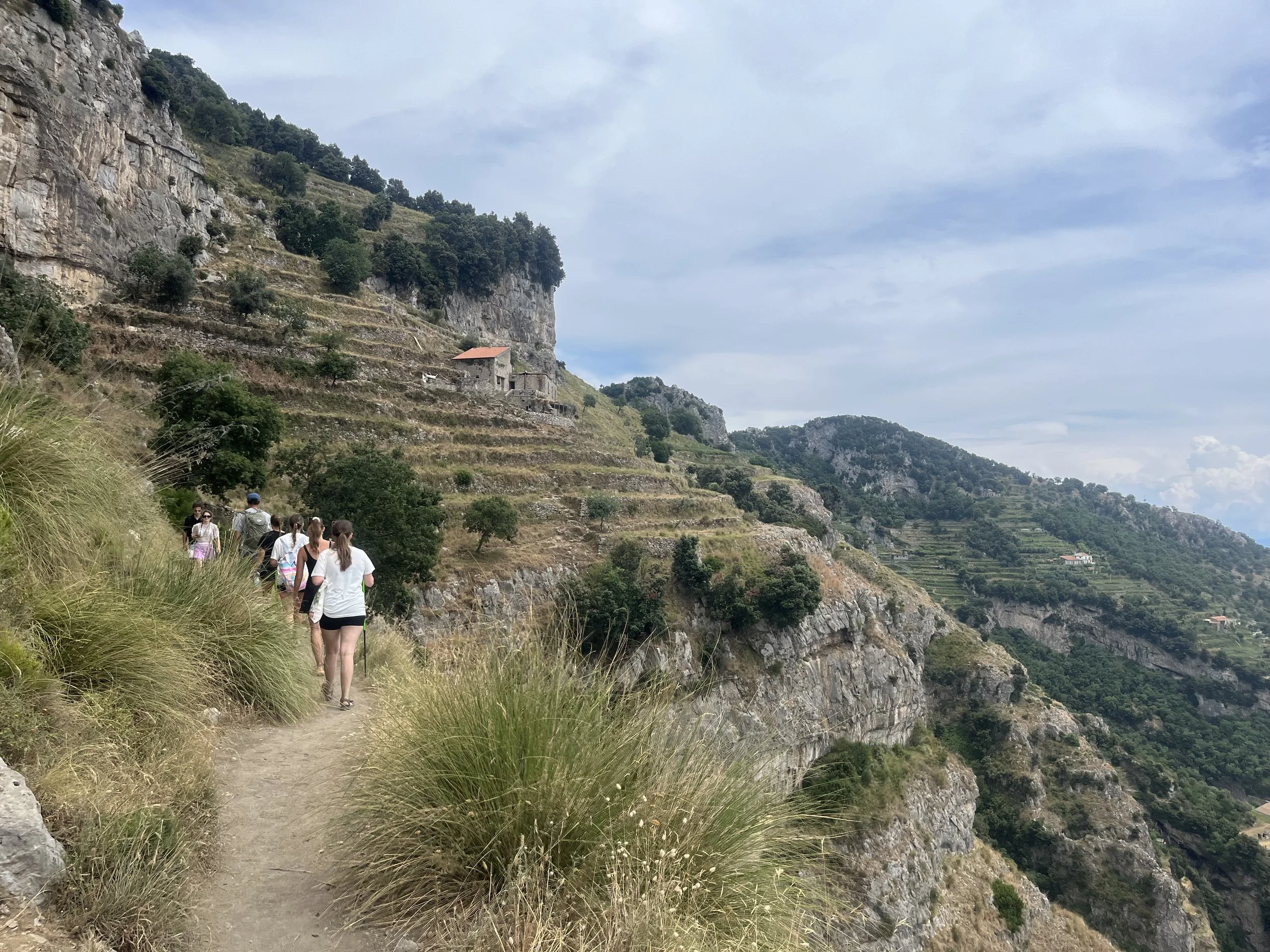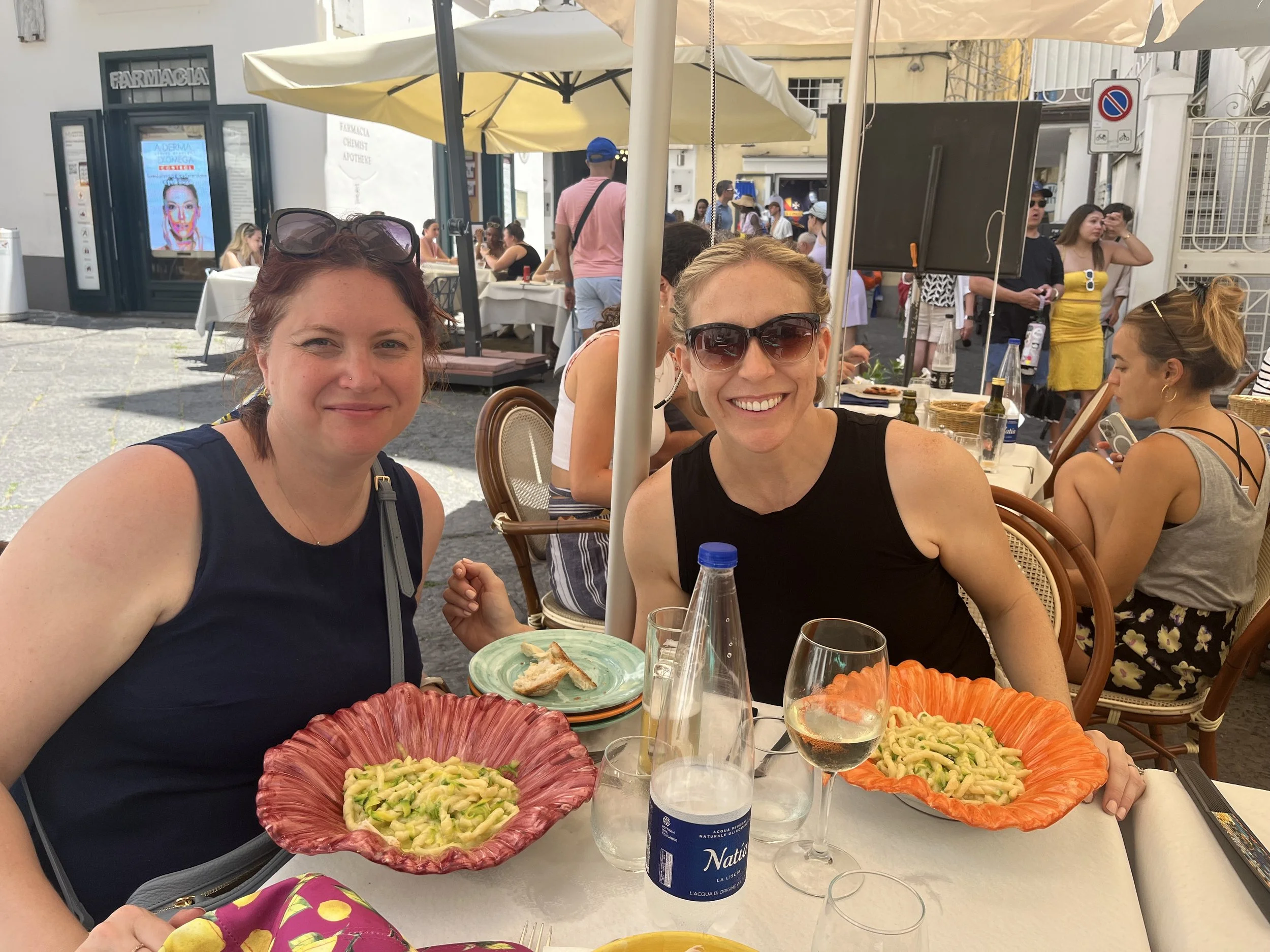Two Weeks in Southern Italy Changed How I Think About Teaching
(and reminded me why I started in the first place)
The view from Capri—a far cry from the windowless lecture hall.
Quick Summary
After a year of burnout, two professors and 26 students left behind the traditional classroom for two weeks in Southern Italy.
What started as a course on the science of stress reduction and the cultivation of happiness became something much deeper: an experience of slowing down, stepping outside comfort zones, and learning through connection, culture, and presence.
This is the story of how we reimagined education—and rediscovered ourselves along the way.
What If All Classrooms Looked Like This?
Last summer, I co-led a study abroad course in Sorrento, Italy with one of my closest friends and colleagues. We decided to teach the course after a year when both of us were running on fumes. Burned out. Disconnected from the work we used to love. Academia had begun to feel like too much and not enough, all at once.
So we asked ourselves:
What if we taught in a way that filled us back up?
What if we created a classroom we actually wanted to be in—one that nourished us, too?
We brought 26 University of Kentucky students—many of whom had never left the U.S.—to Sorrento, Italy for two weeks. I taught the Science of Stress Reduction; she taught the Cultivation of Happiness.
There were no desks.
No cramming.
No boring lectures.
Instead: olive trees, shared meals, and the sound of waves just beyond the lemon groves.
We didn’t ask them to memorize facts.
We asked them to slow down.
To notice.
To feel.
To connect—with themselves, with each other, and with a culture that does things differently.
Learning by Living
Over the course of two weeks, we learned in every sense of the word.
We toured an ancient olive grove and watched oil pressed from trees older than some nations. We visited a multi-generational cheese producer and made our own pizza in wood-fired ovens. We wandered through Amalfi and Positano, ferried to Capri, and hiked to the summit of Mt. Vesuvius before walking through the haunting ruins of Pompeii.
We practiced yoga at a mountain retreat and organic farm overlooking the ocean. We hiked the Path of the Gods and shared lunch in the home of a 5th-generation goat farmer who played the bhodhrán between courses.
For many students, that hike felt intimidating—too long, too steep, too far outside their comfort zones. But they did it anyway. Together. They encouraged each other, stopped for breath and water and shared snacks, and by the time we reached the cliffs overlooking the sea, they weren’t just proud. They were transformed.
We talked a lot about what it means to stretch—what it feels like to do the thing you weren’t sure you could do.
And one warm afternoon, we were invited into the garden of a generous woman for a traditional farm-to-table cooking class. We picked herbs, made fresh gnocchi, and talked over homemade wine—not about drinking to escape, but about wine as a ritual of connection, storytelling, and slowing down together.
Everything on this table was grown with care, picked by hand, and prepared in community. A reminder that nourishment can be simple—and shared.
This Is How Education Should Be
When students feel safe, they’re willing to stretch. To risk. To grow.
In the safety of shared vulnerability, something remarkable happened: relationships deepened, confidence grew, and students stepped far outside their comfort zones.
We asked students to disconnect from their devices and immerse themselves in real life—conversations, surroundings, stillness. That single shift changed everything.
Without their phones to fill the quiet, they became more present. They noticed things. Asked deeper questions. Laughed more easily. Paid attention—to themselves and to each other.
They practiced mindfulness not as theory, but as daily experience. They named their values and made plans to live by them—not later, but now. They reached out to people they missed, and wrote gratitude letters to people they hadn’t thanked in years.
They didn’t just learn about well-being.
They lived it.
While hiking the Path of the Gods, we shared this lunch in the home of a fifth-generation goat farmer who lives on the side of a cliff overlooking the sea—proof that rest feels different when you’ve earned it together.
A Moment in the Hills
One afternoon, I followed my own assignment: to rest, unplug, and simply be. I found a quiet café in the hills above Positano and sat alone with a bellini — and nothing else.
No phone.
No agenda.
Just stillness.
And I asked myself: What does it mean that I’m here?
After so long running on empty, that moment of quiet was its own kind of healing. A reminder that choosing presence over productivity isn’t laziness—it’s liberation.
My view from the hillside café in Positano, where I sat alone, and finally gave myself permission to slow down and feel what this all meant.
Because the World Is the Best Teacher
For many students, this was their first time abroad. For all of us, it was a rare chance to be fully present.
We didn’t cram their minds full of information.
We gave them space to reflect.
To connect.
To wonder.
And in that space, they came alive.
We walked new paths together—literally and figuratively.
We Went Anyway
We went because we believe education can be joyful.
Because real learning happens when students feel safe enough to be curious, brave enough to be vulnerable, and free enough to move at a different pace.
Because the world is full of wisdom that can’t be captured in a lecture slide.
And because sometimes, the best way to learn is to step outside the classroom—and into the world.
My colleague, close friend, and accountability partner in resisting the hustle and living a life grounded in joy, connection, and values. I wouldn’t have done this without her.
This trip changed our students—but it changed us too. And I’m grateful every day that we went anyway.
